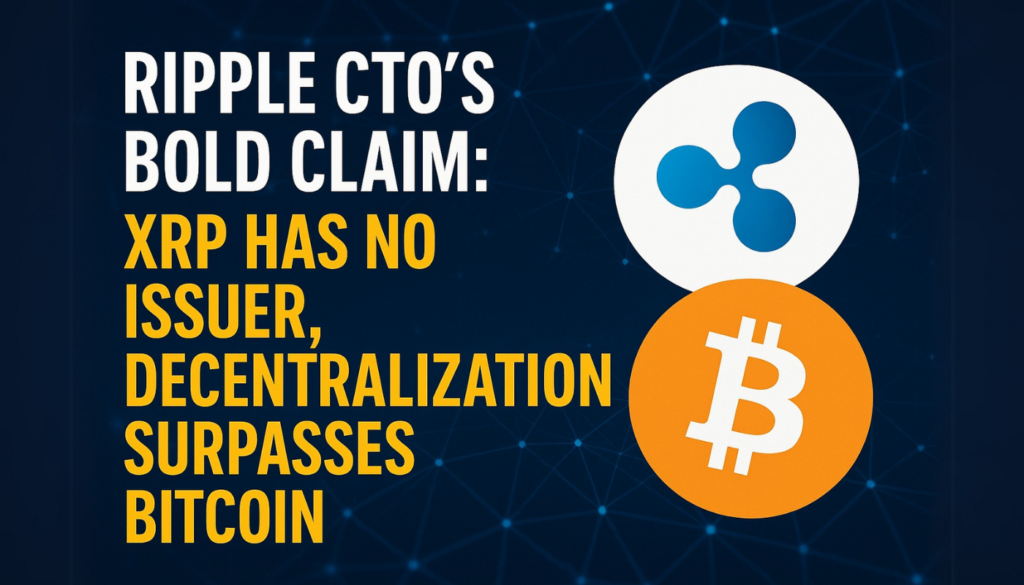Ripple’s Chief Technology Officer David Schwartz has reignited the debate around decentralization in the cryptocurrency space. In a pointed remark, Schwartz asserted, “XRP has no issuer,” highlighting a fundamental difference between XRP and Bitcoin.
His comments surfaced as the discussion about the potential role of cryptocurrencies in U.S. reserves intensifies, with public figures like Conor McGregor showing keen interest. Schwartz clarified that Ripple’s corporate leadership, including CEO Brad Garlinghouse, has no influence over the decentralized nature of the XRP Ledger (XRPL).
Key highlights of Schwartz’s statement:
- All XRP tokens were created at the ledger’s inception.
- Unlike most blockchain networks, XRPL lacks an entity responsible for token issuance.
- The network enables anyone to obtain XRP without centralized gatekeeping.
This perspective underscores XRP’s distinctiveness in a market often dominated by comparisons to Bitcoin’s decentralized ethos.
XRP vs. Bitcoin: A Growing Debate
The renewed spotlight on XRP vs. Bitcoin emerges amid speculations about U.S. crypto reserves and the evolving regulatory landscape. Trump’s reported plans to incorporate cryptocurrencies into U.S. reserves have intensified scrutiny of decentralized platforms.
Schwartz’s comments were partly a response to UFC champion Conor McGregor’s social media engagement, where he expressed curiosity about decentralization claims made by platforms like XRPL and Cardano.
Recent developments fueling the debate include:
- Rising interest in alternative blockchains amid Bitcoin’s scalability and energy challenges.
- Increasing speculation about state-backed crypto reserves, with XRP and Cardano often mentioned as potential candidates.
- Ongoing regulatory shifts in the U.S. and globally, with frameworks for stablecoins and decentralized finance taking shape.
XRPL’s Distinct Features Highlighted
Schwartz emphasized XRPL’s unique structural advantages over traditional blockchain systems, including Bitcoin. He noted that XRPL’s initial token distribution is inherently non-rivalrous, contrasting with Bitcoin’s mining model, which rewards early participants disproportionately.
Additional insights from Schwartz’s clarification include:
- XRPL’s architecture ensures equal opportunity for participants without centralized control.
- The ledger’s design prevents initial distributions from being manipulated or controlled.
- This model fosters a more open and accessible ecosystem, appealing to both retail and institutional players.
As regulatory clarity advances and high-profile endorsements continue, XRPL’s decentralized architecture could attract increased adoption and challenge the dominance of legacy cryptocurrencies like Bitcoin.


